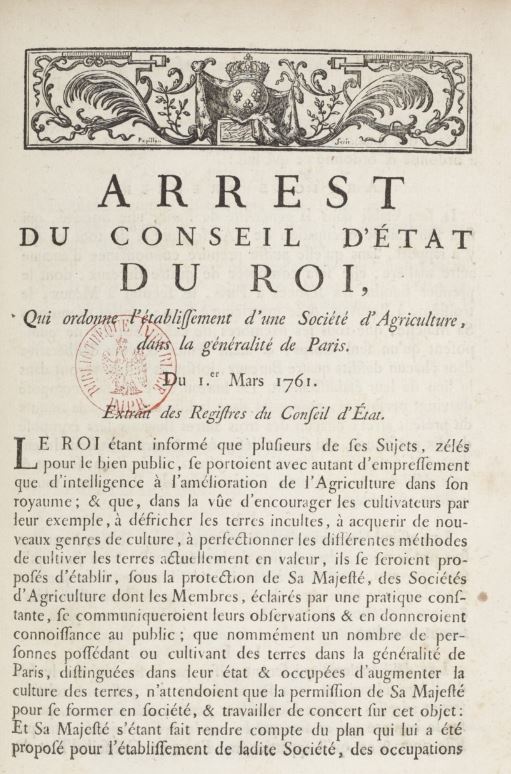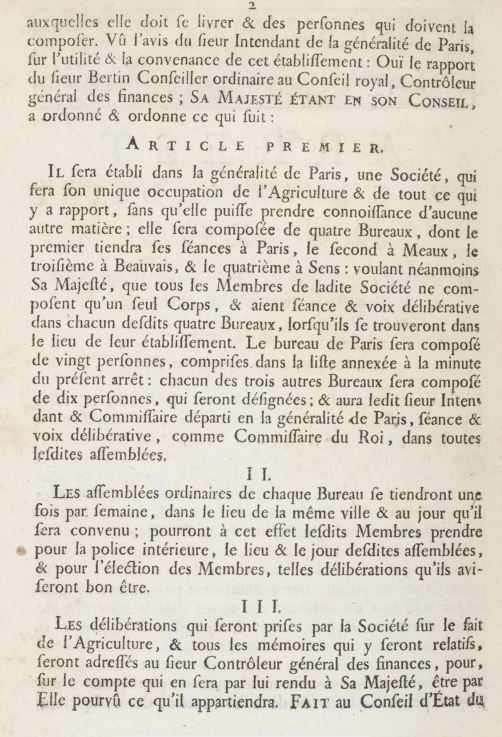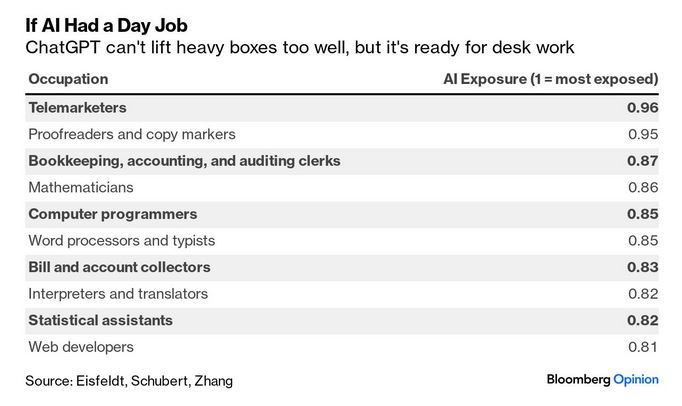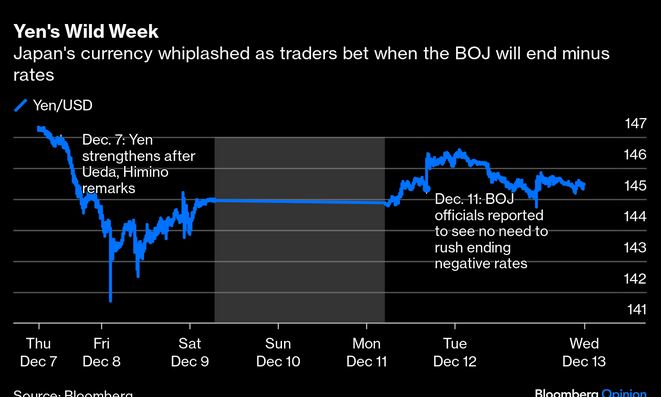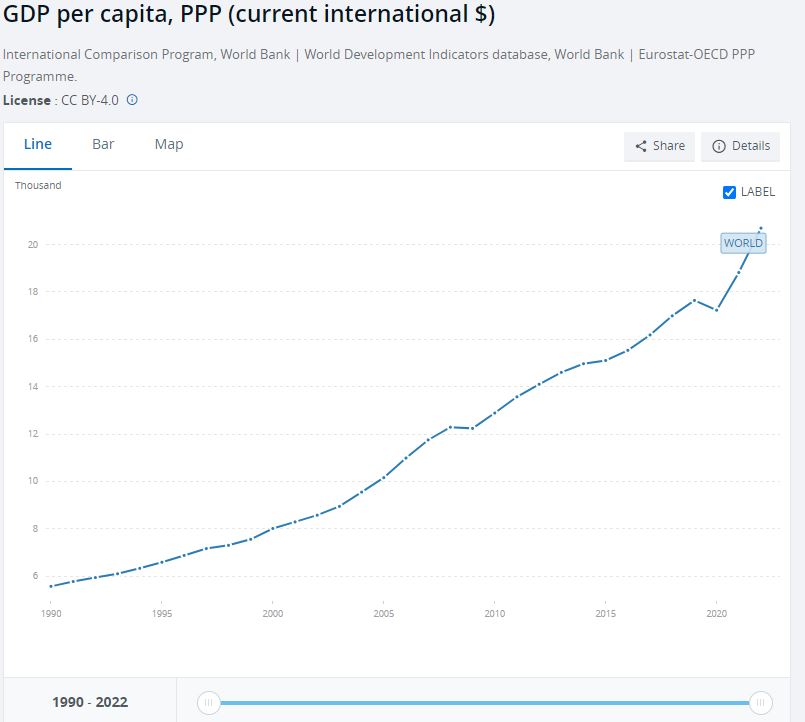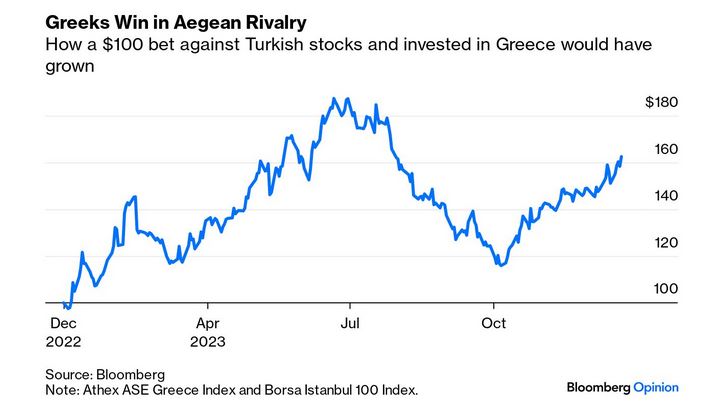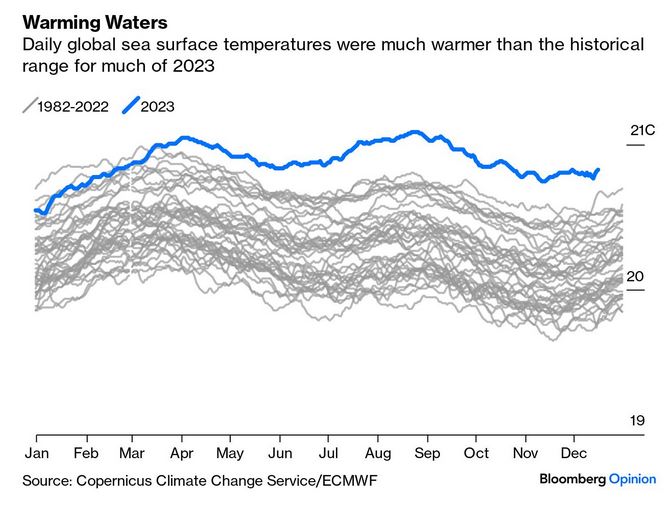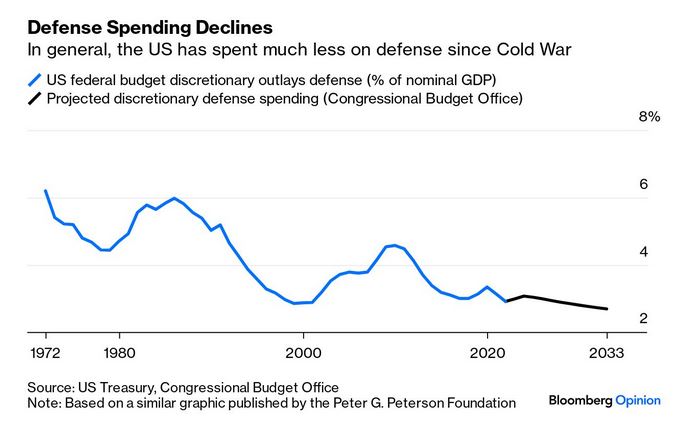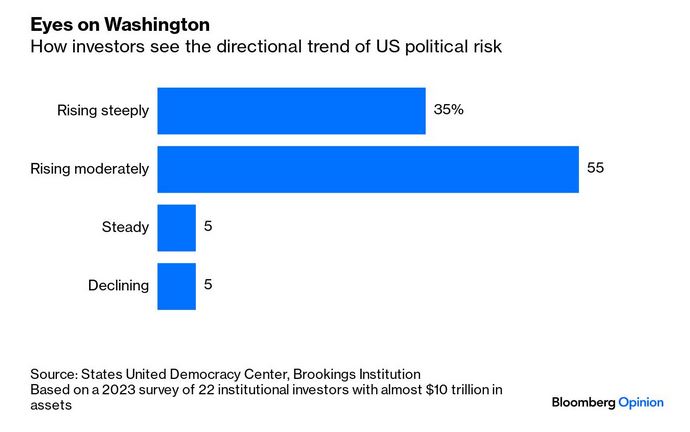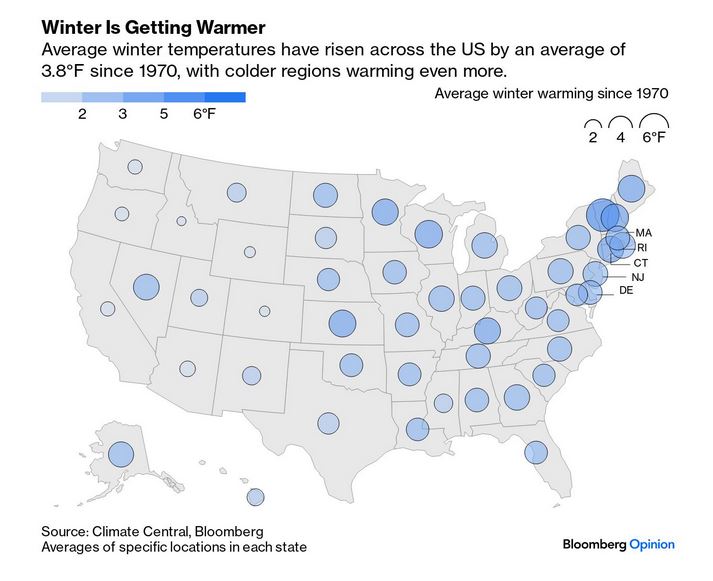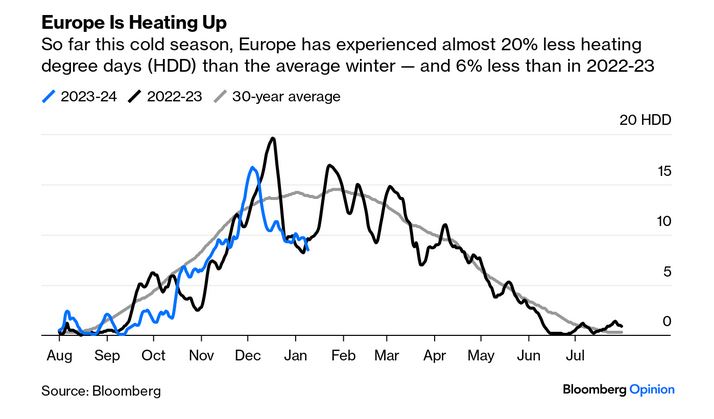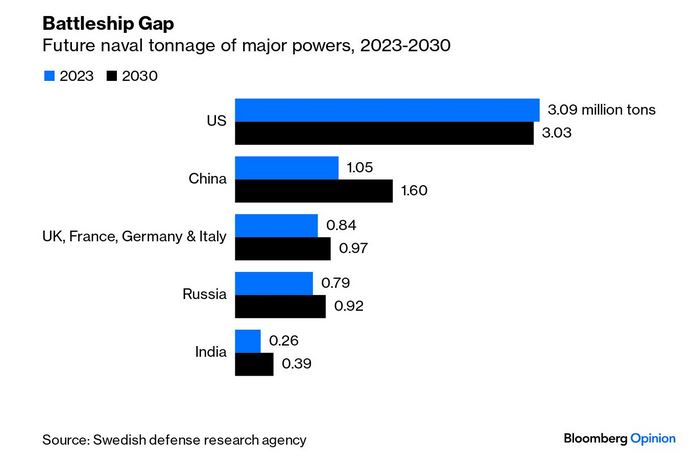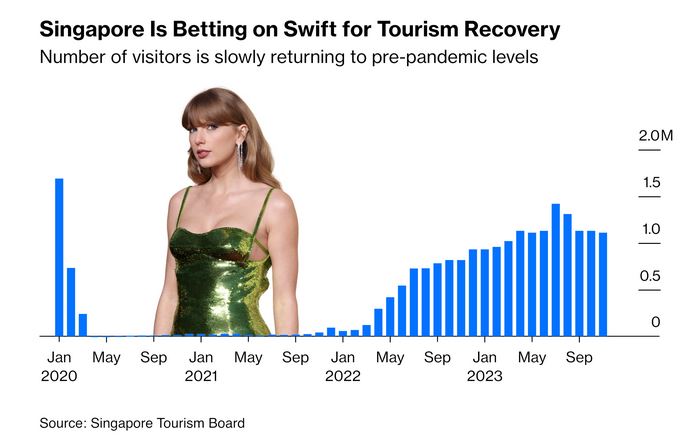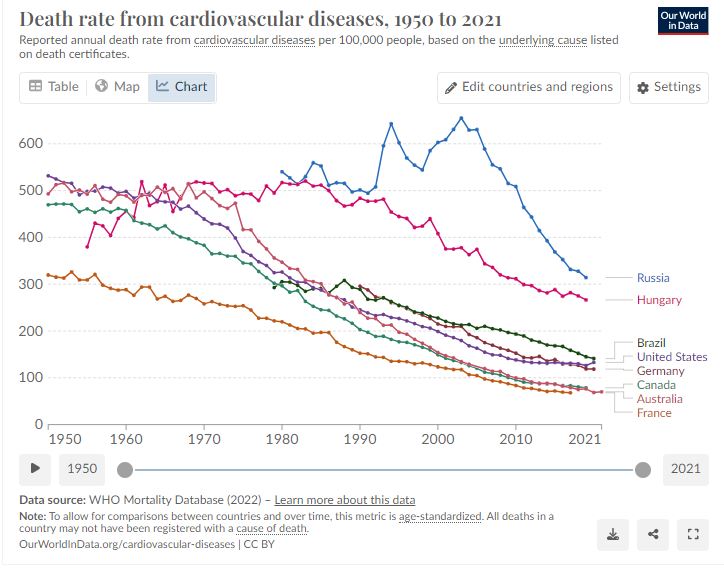|
You
can also view the message online
|
||||||||||||||||||||||||||||||||||||||||||||||||||||||||||||||||||||||||||||||||||||||||||||||||||||||||||||||||||
 Châtenay-Malabry (FR - 92290), January 08, 2024 EFITA newsletter / 1086 - European Federation for Information Technology in Agriculture, Food and the Environment The informatique-agricole.org site offers you the possibility of subscribing the RSS feeds of its two newsletters See RSS feeds to implement to ensure that you continue to receive this newsletter To unsubscribe this newsletter, please contact me directely: guy.waksman(a)laposte.net if this link Unsubscribe does not work. 
To correspond with me (GW), please use this address: guy.waksman(a)laposte.net To subscribe the efita newsletter (please ask your friends and colleagues to test this link) Efita Newsletters subscription Before computers: harvesting / Avant l'informatique, la moisson
Green wishes for our insect friends? / Meilleurs voeux pour nos "amis" les insectes ?
FutureFarming.com > Video / Autonomy ready tractors on display at Agritechnica 2023 Tractors capable of autonomous, driverless operation were more prominent than ever at Agritechnica 2023. > Fieldwork wins government grant to accelerate £1.1m BerryBot project Fieldwork Robotics Ltd. has been awarded a £515k grant to accelerate its £1.1m BerryBot Project. > Market information: US drone technology firm PrecisionHawk files for bankruptcy PrecisionHawk, a developer of commercial drones, is shutting down. Last month the company voluntarily filed for Chapter 7 bankruptcy. > Climate change: Unveiling the Millet Demo Farm: an initiative for climate resilience The International Center for Biosaline Agriculture (ICBA) recently hosted an event in Dubai, UAE, to launch the Millet Demo Farm. > future farming: 2023 top 5: Most read articles in general Future Farming offers a lot of articles on general subjects like market information, trade fairs and tools & data. An overview of the most read articles in 2023. > Future farming / 2023 top 5: Most read articles on field robots The 5 best-read articles on field robots in 2023 on Future Farming. > Future farming / 2023 top 5: Most read articles on drones The 5 best-read articles on drones in 2023 on Future Farming. > Future farming / 2023 top 5: Most read articles on autonomy The 5 best-read articles on autonomy in 2023 on Future Farming. > Spraying technology / Video / Bayer is also working on a carried spot sprayer The German company Bayer Crop Science took the opportunity at the Agritechnica trade fair to showcase a prototype of its spot sprayer. > Future farming 2023 top 5: Videos with the most views The 5 videos with the most views on our YouTube channel in 2023. > What robot should become the Ag Robot of the Year 2024? Future Farming magazine, in collaboration with the Agricultural Robotics Forum FIRA, is organising the second edition of the Ag Robot of the Year competition. > Humanoids: ‘The Humanoid revolution: A new farmhand with steel muscles?’ Many of us are familiar with the inspiring images of dancing and leaping humanoids from companies like Boston Dynamics. > Millet Demo Farm / Unveiling the Millet Demo Farm: an initiative for climate resilience The International Center for Biosaline Agriculture (ICBA) recently hosted an event in Dubai, UAE, to launch the Millet Demo Farm. > Spraying technology: Plant-specific spot spraying to become mainstream John Deere isn’t the first and certainly not the only company to offer a commercial spot spraying system. > Field robots / Video – Modular Tipard 1800 field robot from Digital Workbench The German engineering company Digital Workbench presents the Tipard 1800 field robot at the Agritechnica trade fair. > Spraying technology / John Deere See & Spray weeds on fallow land and in crops After the US$ 305 million acquisition of Blue River Technology, John Deere is now ready to launch John Deere See & Spray in Europe. > Autosteering / Hands-free steering on headlands with TurnPath from Ag Leader Automatic steering without hands on the headland is possible with the TurnPath autopilot from the American manufacturer Ag Leader. > Smart farming / Amazone & FieldView to collaborate on smart farming Amazone and FieldView start a strategic collaboration for further promoting and simplifying the adaptation of smart farming practices. > Pest control / ‘Cut pesticide use, but how?’ Successful green innovation requires knowledge of plant cultivation, behavioural science, technology and ecology. See futurefarming.com The Little Goose Girl Of Mezy, by Léon-Augustin L’hermitte (1844 – 1925, French)
The Little Shepherdess, by Émile Munier (1840 – 1895, FR)
Jeune bergère, par Émile Munier (1840 – 1895, FR)
CropLife 100 Ag Retailers Are Expecting More from Ag Tech in 2024 Let’s face it – ag tech is hot right now. If you visited any summer or fall trade show this year, chances are there were plenty of examples of new and improved ag technology to check out, writes Eric Sfiligoj at CropLife. According to the data from the 2023 CropLife 100 survey, ag technology was also a growing sector of the ag retail business during the year. In fact, respondents on the 2023 survey reported that their revenues in this area grew a respectable 2%, from $796.2 million in 2022 to $815.1 million this year. Furthermore, the outlook for the ag tech sector among CropLife 100 ag retailers is extremely bright. In particular, ag retailers have high hopes that artificial intelligence (AI) and autonomous vehicles will revolutionize the ag equipment sector between now and the end of the decade. However, most expect the implementation of autonomous vehicles and AI systems into ag equipment to take some time yet. In fact, when asked what role AI might play in the upcoming growing season, half of the respondents (50%) said it was still too early to tell. Another 35% thought AI’s place in the industry would be “small” in 2024. Only 15% foresee such systems playing a “big role” in the nation’s crop fields next year. .../... See globalagtechinitiative.com Pessl Instruments Adopts Varda’s Global FieldID to Boost Transparency, Profitability for Farmers Varda, the agtech startup founded by Yara, has announced its partnership with Pessl Instruments, the global manufacturer and leading provider of advanced agricultural technology solutions under the METOS brand. Varda’s Global FieldID, which establishes a shared geospatial reference framework for the entire agricultural industry, will seamlessly integrate with the entirety of the METOS portfolio – which covers a range of resources including weather stations, AI-powered insect traps and data loggers – to give farmers a range of data-powered insights on their land which have previously not been readily accessible. .../... See globalagtechinitiative.com Blockchain Streamlines Agriculture in a Big Data World — New eBook Explains How “Data is as valuable as the crops themselves.” That phrase sums up the role technology plays in the agricultural sector as farmers grapple with new challenges. Even the word “farming” itself is being replaced by others like “agribusiness” and “AgriTech.” Where data is important, blockchain is essential. To explain the hows and whys of this, reports CoinGeek, the BSV Blockchain Association has published a new ebook by Bryan Daugherty titled “Revolutionising Agriculture in the Digital Age,” available as a free download right now. Agriculture has always been a science, but for thousands of years, it has existed in the form of traditions and knowledge gained from practical experiences passed down through generations of farmers. In the search for ever-greater efficiencies and from the availability of new technologies, concepts like “precision farming,” IoT, Big Data analytics, sustainability, and resource-scarcity, and robotics have entered the field—along with a few others you wouldn’t immediately expect, like cybersecurity, transparency, and even “democratization of data.” Technology has mitigated problems related to distance, transportation, and supplies, which have always affected agriculture. However, the modern world has also raised new ones like access to/scarcity of resources, energy efficiency and availability, and requirements to reduce any negative impacts on the environment. Farmers of the future won’t wake in the morning to discover a fox has been in the chicken house. They’ll hear about it and take steps to deal with it the second it happens. They’ll also have the latest information about chicken health and optimal nutrition for better yields, find out instantly if there are any disease threats and how to manage them, know the latest egg/meat prices worldwide, automate egg collection and bird grading, and mark all product for tracking as it changes hands until it reaches the end consumer (there’s no word on how foxes will fare in this world, but that’s a problem for foxes). See globalagtechinitiative.com
Girl With Basket Of Oranges, by Émile Munier (1840 – 1895, FR)
Good products sell themselves; fear doesn’t need to be an ingredient, by Amanda Zaluckyj, The Farmer’s Daughter USA Fear-based marketing is almost always bad. It’s a marketing strategy that appeals to consumers’ fears and anxieties in order to motivate them to take a specific action. While effective in the short term, it can cause negative consequences for both consumers and businesses. That’s because it taps into our basic survival instincts. When we’re afraid, we’re more likely to take a certain action to protect ourselves from harm. See agdaily.com UK: Winning R&D partnerships announced for new on-farm innovations Three successful projects will share £9.13m funding to develop their novel solutions in crop harvesting, cow health and robotics to tackle on-farm issues. .../... >> The Agri-Opencore project, led by APS Produce, is looking to accelerate the delivery of robotic crop systems for horticulture. It aims to create the necessary software and hardware for a development platform that receives contributions from stakeholders across the sector to create a system that could bring robotic harvesting to farms sooner. >> The AG ARC project, led by Garnett Farms Engineering, is developing an autonomous bedding system for cows that will improve its monitoring and dispensing. It aims to reduce incidences of mastitis in cows by sensing moisture and temperature within cubicles and providing bedding in response, thereby supporting animal health and farm productivity aims. >> The Potato-LITE project, led by PepsiCo, is exploring new cultivation equipment and systems for potato farming that reduce the impact on soil health and the costs of cultivation. The project aims to reduce damage from the number, depth and intensity of current techniques in order to improve longer-term resilience in the sector. .../... See ukri.org Le petit joueur de tambour, de Théophile Emmanuel Duverger (1821 - 1898)
A Woman peeling Vegetables, by William Kay Blacklock
We stopped taking Ozempic and Wegovy — and regained more weight than we lost, by Brooke Steinberg, Jan. 3, 2024 Drugs designed to treat diabetes have become one of the hottest and most controversial weight-loss crazes. But some people who hopped on the Ozempic train are starting to regret it, claiming they’ve gained back more weight than they lost when they stopped taking it. Ozempic and Wegovy, a drug called semaglutide designed for people with Type 2 diabetes, helps the pancreas release the right amount of insulin when blood sugar levels are high. However, both have become widely used as weight-loss drugs. The Messenger spoke to several dieters who regained the weight they lost — and then some — like Artemis Bayandor, who lost 15 pounds in six months when she started taking Wegovy in August 2021. .../... See nypost.com Children with a Kitten Duvet Cover, by Heinrich Hirt (1841-1902)
Young girl in a blue pinafore, 1914, by William Kay Blacklock (1872-1924, UK)
The energy world is set to change significantly by 2030, based on today’s policy settings alone (24 October 2023) World Energy Outlook shows there are set to be almost 10 times as many electric cars on the road, with renewables nearing half of the global power mix, but much stronger policies needed for 1.5 °C. Major shifts underway today are set to result in a considerably different global energy system by the end of this decade, according to the IEA’s new World Energy Outlook 2023. The phenomenal rise of clean energy technologies such as solar, wind, electric cars and heat pumps is reshaping how we power everything from factories and vehicles to home appliances and heating systems. The latest edition of the World Energy Outlook (WEO), the most authoritative global source of energy analysis and projections, describes an energy system in 2030 in which clean technologies play a significantly greater role than today. This includes almost 10 times as many electric cars on the road worldwide; solar PV generating more electricity than the entire US power system does currently; renewables’ share of the global electricity mix nearing 50%, up from around 30% today; heat pumps and other electric heating systems outselling fossil fuel boilers globally; and three times as much investment going into new offshore wind projects than into new coal- and gas-fired power plants. All of those increases are based only on the current policy settings of governments around the world. If countries deliver on their national energy and climate pledges on time and in full, clean energy progress would move even faster. However, even stronger measures would still be needed to keep alive the goal of limiting global warming to 1.5 °C. The combination of growing momentum behind clean energy technologies and structural economic shifts around the world has major implications for fossil fuels, with peaks in global demand for coal, oil and natural gas all visible this decade – the first time this has happened in a WEO scenario based on today’s policy settings. In this scenario, the share of fossil fuels in global energy supply, which has been stuck for decades at around 80%, declines to 73% by 2030, with global energy-related carbon dioxide (CO2) emissions peaking by 2025. “The transition to clean energy is happening worldwide and it’s unstoppable. It’s not a question of ‘if’, it’s just a matter of ‘how soon’ – and the sooner the better for all of us,” said IEA Executive Director Fatih Birol. “Governments, companies and investors need to get behind clean energy transitions rather than hindering them. There are immense benefits on offer, including new industrial opportunities and jobs, greater energy security, cleaner air, universal energy access and a safer climate for everyone. Taking into account the ongoing strains and volatility in traditional energy markets today, claims that oil and gas represent safe or secure choices for the world’s energy and climate future look weaker than ever.” As things stand, demand for fossil fuels is set to remain far too high to keep within reach the Paris Agreement goal of limiting the rise in average global temperatures to 1.5 °C. This risks not only worsening climate impacts after a year of record-breaking heat, but also undermining the security of the energy system, which was built for a cooler world with less extreme weather events. Bending the emissions curve onto a path consistent with 1.5 °C remains possible but very difficult. The costs of inaction could be enormous: despite the impressive clean energy growth based on today’s policy settings, global emissions would remain high enough to push up global average temperatures by around 2.4 °C this century, well above the key threshold set out in the Paris Agreement. The WEO-2023 proposes a global strategy for getting the world on track by 2030 that consists of five key pillars, which can also provide the basis for a successful COP28 climate change conference. They are: tripling global renewable capacity; doubling the rate of energy efficiency improvements; slashing methane emissions from fossil fuel operations by 75%; innovative, large-scale financing mechanisms to triple clean energy investments in emerging and developing economies; and measures to ensure an orderly decline in the use of fossil fuels, including an end to new approvals of unabated coal-fired power plants. “Every country needs to find its own pathway, but international cooperation is crucial for accelerating clean energy transitions,” Dr Birol said. “In particular, the speed at which emissions decline will hinge in large part on our ability to finance sustainable solutions to meet rising energy demand from the world’s fast growing economies. This all points to the vital importance of redoubling collaboration and cooperation, not retreating from them.” At a time when rising geopolitical tensions in the Middle East have refocused attention on energy security concerns once more and when many countries are still contending with the impacts of the global energy crisis that erupted last year, the WEO-2023 examines the evolving range of energy security challenges. The fraught situation in the Middle East comes 50 years after the oil shock that led to the founding of the IEA, creating further uncertainty for an unsettled global economy that is feeling the effects of stubborn inflation and high borrowing costs. The WEO-2023 highlights that one area of global energy markets that was hit particularly hard by the global energy crisis is set to see pressures ease in a couple of years. Natural gas markets have been dominated by fears about security and price spikes after Russia cut supplies to Europe, and market balances have remained precarious. But an unprecedented surge in new liquefied natural gas (LNG) projects coming online from 2025 is set to add more than 250 billion cubic metres per year of new capacity by 2030, equivalent to around 45% of today’s total global LNG supply. The strong rise in capacity will ease prices and gas supply concerns, but also risks creating a supply glut, given that global gas demand growth has slowed considerably since gas markets’ “golden age” of expansion during the 2010s. As a result, Russia will have very limited opportunity to expand its customer base. Its share of internationally traded gas, which stood at 30% in 2021, is set to drop to half of that by 2030. The WEO-2023 considers in detail a major variable for energy markets in the coming years. China, which has an outsize influence on global energy trends, is undergoing a major shift as its economy slows and undergoes structural changes. China’s total energy demand is set to peak around the middle of this decade, the report projects, with continued dynamic growth in clean energy putting the country’s fossil fuel demand and emissions into decline. This year’s WEO also explores the potential for stronger growth of solar PV this decade. Renewables are set to contribute 80% of new power generation capacity to 2030 under current policy settings, with solar alone accounting for more than half of this expansion. However, this scenario takes into account only a fraction of solar’s potential, according to the WEO analysis. By the end of the decade, the world is set to have manufacturing capacity for more than 1 200 gigawatts (GW) of solar panels per year, but it is projected to actually deploy only 500 GW in 2030. If the world were to reach deployment of 800 GW of new solar PV capacity by the end of the decade, it would lead to a further 20% reduction in coal-fired power generation in China in 2030 compared with a scenario based on today’s policy settings. Electricity generation from coal and natural gas across Latin America, Africa, Southeast Asia and the Middle East would be a quarter lower. See iea.org Midday rest, 1915, by William Kay Blacklock (1872-1924, UK)
The Shepherdess, not dated, by William Kay Blacklock (1872-1924, UK)
Bad Joke
Yen Up and Down
Increasing GDP per Capita
Investing in Greece is more profitable than investing in Turkey
Hot waters
US Defense Spending Declines
Election vs Democracy?
US political risk as seen by investors
Warmer US winter
Warmer Europe
Battleship Gap
Will Taylor Swift save Singapore tourism?
Death rates from cardiovascular diseases have declined in many countries The number of deaths from cardiovascular diseases is increasing, but — as this chart shows — the death rate has declined in many countries. This means that the risk of death from cardiovascular diseases now is lower than in the past among populations of the same size and age. In many countries, the decline in death rates has been quite large. In the United States, for example, the age-standardized death rate from cardiovascular diseases was over 500 per 100,000 people in 1950, but declined to less than 150 by 2020. This represents a reduction of almost three-quarters. What’s been responsible for this positive decline? A major driver has been the dramatic decline in smoking. We've also achieved major medical advances in screening, diagnosing, monitoring, and treating cardiovascular diseases. We recently published a new page on cardiovascular diseases where you can explore all of our data, visualizations, and writing on the topic.
The world faces two energy problems: most of our energy still produces greenhouse gas emissions, and hundreds of millions lack access to energy The world lacks a safe, low-carbon, and cheap large-scale energy infrastructure. Until we scale up such an energy infrastructure, the world will continue to face two energy problems: Hundreds of millions of people lack access to sufficient energy The dominance of fossil fuels in our energy system drives climate change and other negative health impacts, such as from air pollution To ensure everyone has access to clean and safe energy, we need to understand energy consumption, its impacts around the world today, and how this has changed over time. To aid this understanding, we published a new page on energy where you can find all of our data, visualizations, and writing on the topic.
More progress can be made against childhood tuberculosis Tuberculosis is still common in many parts of the world. It tends to be serious in children because their underdeveloped immune systems make them more vulnerable to the disease, especially if they are undernourished. The BCG (Bacillus Calmette-Guérin) vaccine was developed by Albert Calmette and Camille Guérin in 1921 to protect infants and young children from severe tuberculosis. Since then, it has become one of the most widely used childhood vaccines worldwide. Yet, as the map shows, tens of thousands of children still die from the disease, and it is one of the major causes of death in children. One reason is that the vaccine’s efficacy tends to be lower in some parts of the world. Children also remain at risk for other reasons; for example, there is a lack of medication and diagnostic testing developed for children. In addition, many children, especially in Africa, also suffer from HIV/AIDS, which makes them more vulnerable to tuberculosis. We published a new page on tuberculosis where you can explore all of our data, visualizations, and writing on the topic.
Wild mammals are making a comeback in Europe thanks to conservation efforts The European bison, the continent's largest herbivore, was once abundant across the region. But over time, deforestation and hunting caused its numbers to decline dramatically. By the early 20th century, the European bison had gone completely extinct in the wild, with only tens of individuals surviving in captivity. The bison is no outlier, and many other animals have suffered similarly. But it doesn’t have to be this way — and the bison shows it. The European bison has made an impressive comeback over the last 50 years. Successful conservation efforts have seen their numbers rebound, and Europe is now home to nearly 10,000 of them. In this article, we look at the change in mammal populations across Europe and find that many species are making a comeback. Once on the brink, iconic animals such as the European bison, Brown bear, and elk are thriving once again.
Four rabbis are having a debate Four rabbis are debating scripture out in the garden, and one of them notices he's continuously outvoted by the other three even though he's absolutely certain he's right. At a certain point, his frustration gets the best of him and he stands up, raises his hands and and says "My Lord, you must know that this is the right way, gives us a sign to let us know!" As soon as he has spoken, a cloud materializes out of nowhere, moves in front of the sun and dissolves again. The other three look at him, at each other, go "Well... That was certainly unusual, but the weather's been acting up a bit lately, so this does not really mean anything", and just continue with the discussion unmoved. The fourth rabbi, increasingly desperate, again stands up and calls out "My Lord, they continue to defy your word, please send another sign to help them see the error of their ways!" This time, it's not just one cloud, but the entire sky darkens, a thunderclap sounds and a bolt of lightning hits *just* next to the other three rabbis. They're startled, but after catching their breath conclude that no, you don't see that every day, but it's late summer, thunderstorms can come in surprisingly quickly, we're out in an open garden, there's no lightning rod on top of the synagogue even though there *really* should be, etc. So this still doesn't mean anything, we'll stick with our viewpoints thank you very much. Now absolutely livid and still outvoted, the fourth rabbi gets up one final time, stamps his feet, raises his hands and shouts "Oh Lord, you who created all, for the love of your people and the ways of the world, make your will known, so that it must be clear even to these stubborn mules!" And a booming voice fills the sky, "**HE IS CORRECT**" The other three rabbis look up, look down to their colleague, and finally one says: "That's still three against two"
The edition of this efita newsletter is sponsored by Acta Digital Services and its distribution by vitisphere.com Please, contribute to the content of your efita newsletter, and advertise your events, new publications, new products and new project in this newsletter. Without your support, it will not survive! Contact: Guy WAKSMAN E-mail: guy.waksman(a)laposte.net To read this newsletter on our web site See Efita The archives of this newsletter See Efita About the EFITA mailing list You can use the efita moderated list (> 15000 subscribers) to announce any event / product / web site / joke (!) related to IT in agriculture, environment, food industry and rural areas. If you want to subscribe a friend, please fill in his form. If you do not wish to receive our messages, please fill in the following form... |


